Flying The New Lufthansa Business Class On The 747-8 Jumbo From Miami To Frankfurt [PHOTOS]

The Boeing 747 may be an endangered species, threatened by the commercial success of big twinjets that do almost everything the Jumbo Jet can, but using two fever engines -- yet it's still going strong with several of the world's biggest airlines. One of them is Lufthansa , which flies 29 of the four-engined behemoths on its long-range network, making the German airline one of the world's biggest operators of the 747.
Seven of those are 747-8s, the latest (and likely last) version of the giant, which Lufthansa deploys on routes where demand for first and business class is especially heavy. Taking advantage of the sheer size of the jet, Lufthansa can squeeze in as many as 100 premium-class seats in a 747-8 -- a money-making move for airlines, which mostly earn profits from premium flyers, not economy class passengers.

Lufthansa is alone in operating the new plane. Of the 15 units delivered so far of the -8I passenger version by Chicago-based Boeing, eight are used as private jets by billionaire VIPs and oil-rich governments including Kuwait and Qatar, and seven fly for the German flag carrier. Thirty-five more fly for cargo airlines as the -8F freighter version.
The latest route on which Lufthansa introduced the Dash 8 is Frankfurt-Miami-Frankfurt. The International Business Times was a guest of the airline on flight LH463, the inaugural run to Frankfurt, on May 30. All seats (eight in first class, 80 in business, 298 in economy) were filled for the 4,830-mile (7,800-kilometer) route, a relatively short hop for the latest Jumbo, built to carry a typical load of 467 passengers over 9,210 miles nonstop.
Our plane, the Sachsen-Anhalt (Lufthansa names most of its planes after German towns and regions; ours was christened after the former East German federal state), was delivered in October 2012 to the airline, which has ordered 20.
While the captain and first officer got ready for the flight, a quick visit to the cockpit showcased the high degree of technology on the Dash 8 flight deck. The second display from the left shows a moving map of the airport, while the two big screens at each pilot's side are the so-called Electronic Flight Bag, both replacing the heavy cases full of manuals and maps that pilots would otherwise have to carry on board. "The biggest difference from previous 747s is the amount of paper we use," said Senior First Officer Guy van Melle, one of the relief pilots on our flight.
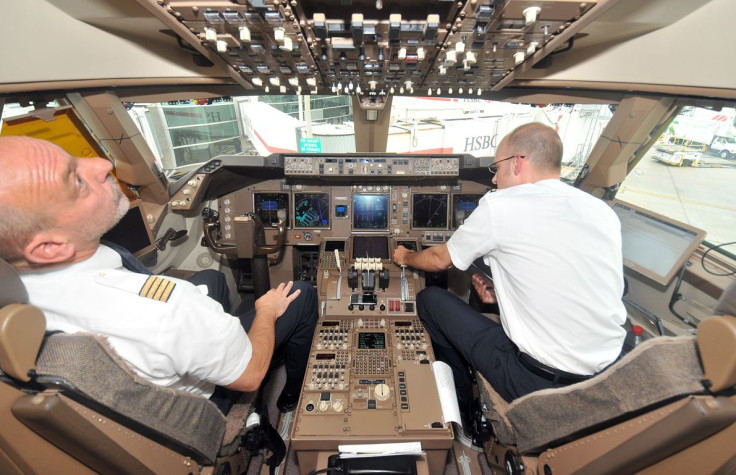
Another innovation is the crew rest on the upper deck, a surprisingly large area at the back of the plane where pilots and flight attendants can take naps on longer flights.

Access to the upper deck business class is via a stairway -- less challenging today than the spiral staircase on early Jumbos from the 1970s. The 32 seats on the upper deck give the area a cozy atmosphere, enhanced by the quiet of the General Electric engines, far below and behind.

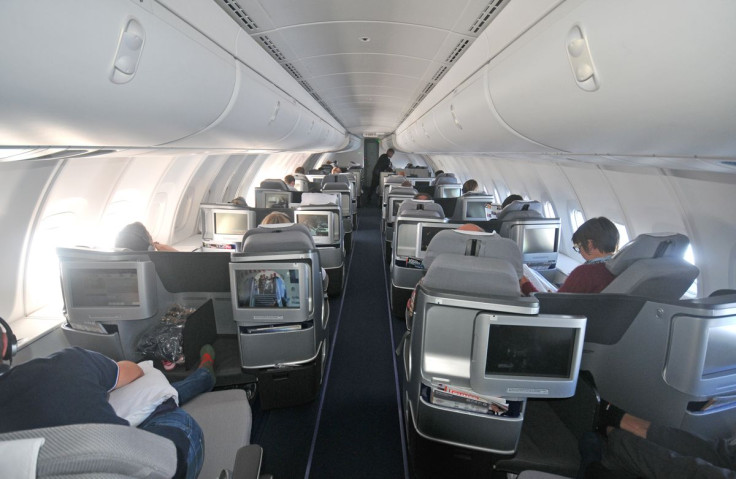
While economy class passengers boarded, business class settled in with a welcome drink, in my case a glass of Duval Leroy champagne. The new Lufthansa business class seat offers enough privacy despite the slight angle of the seats toward each other.
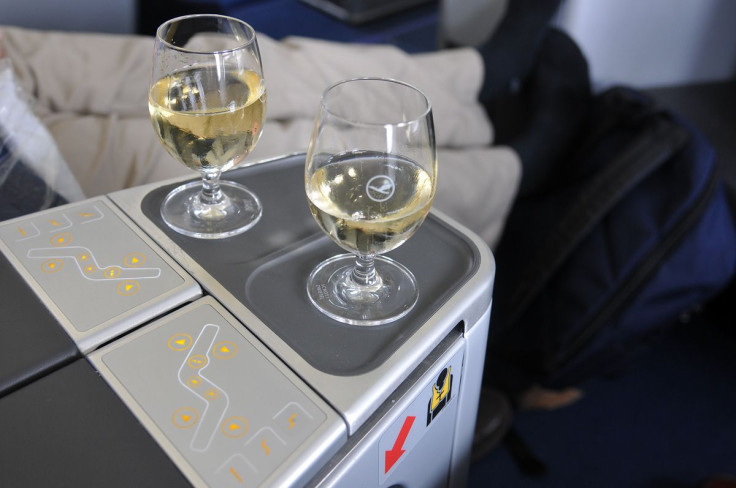
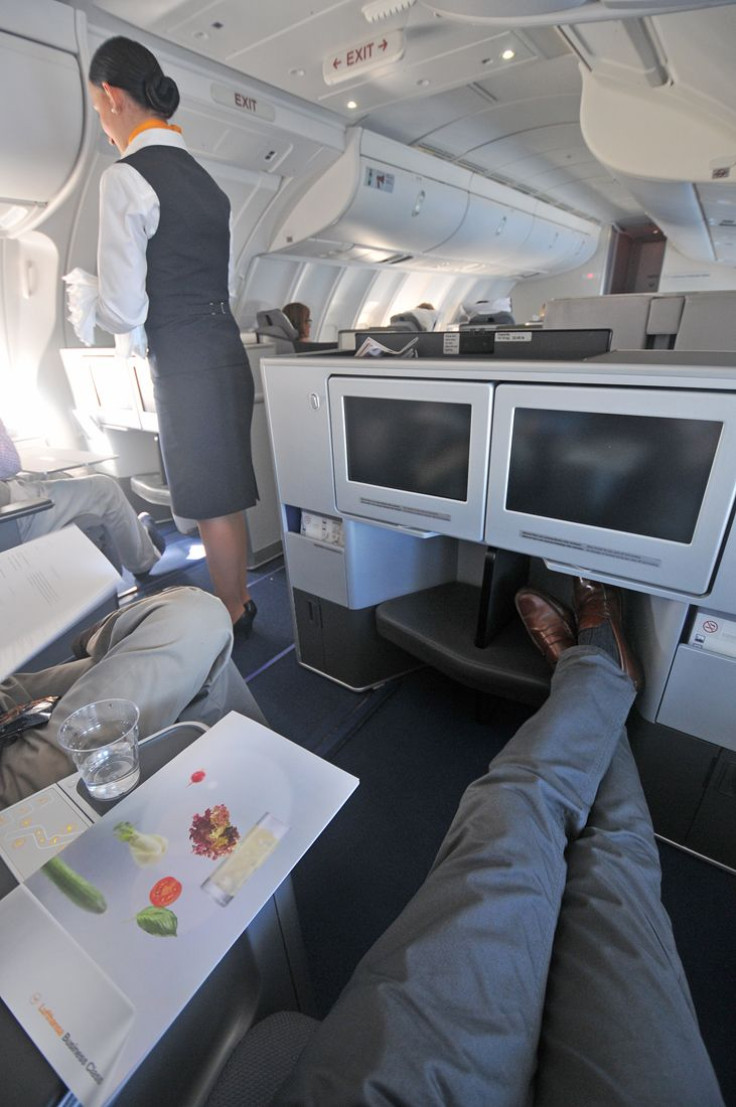
About one hour after takeoff, around 7 p.m. Miami time, dinner service started, with a simple and cleanly presented prosciutto and cantaloupe appetizer. The other two choices were shrimp cocktail with Thai chili and asparagus with mozzarella, the latter a must-have on a German menu during the celebrated Spargelzeit, or asparagus time. That's when the stalks are plentiful in the late spring fields and the entire country, coming out of the harsh winter, goes asparagus crazy. Lufthansa is no exception, even when the asparagus come from the catering facilities at the Miami airport -- and therefore most likely from South America.
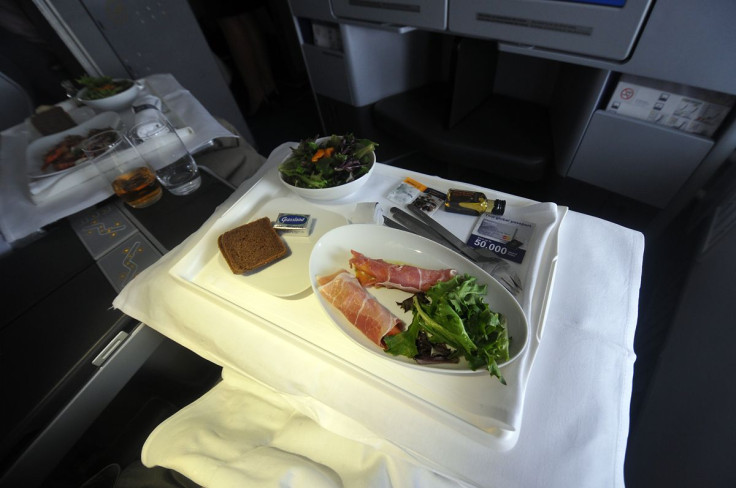
My entrée was a seared, and slightly too dry, chicken breast with couscous. (Seared salmon with wild rice and hazelnut gnocchi in cream sauce were also available.) Dessert was a fruit bowl and a Haagen-Dazs dulce de leche ice cream; I passed over the cheese plate. Wine was a 2012 white Gruener Veltliner from Austria.

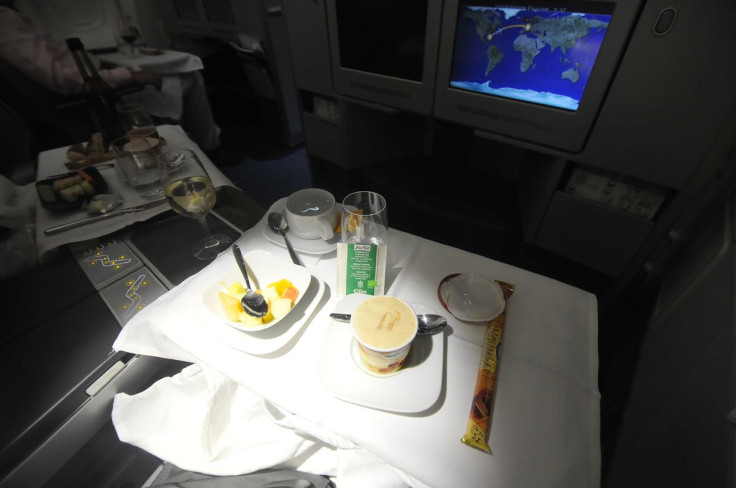
After a quick detour from our planned flight path to avoid weather over the Atlantic, it was time to test the 6-feet, 5-inch (2-meter) fully flat bed and its intuitive controls. Verdict: It's as good as sleeping in business class gets. I'm 6-foot-2, and fit comfortably with ample room to spare.
I'm the kind of flyer who prefers books to in-flight entertainment systems, but for those who must go digital even while crossing the oceans at 30,000 feet, the system performed flawlessly on the large screen and offered a selection to please everybody (except for the inflight trivia contests that other airlines offer and that let passengers challenge one another). A word of caution for the always-connected crowd: Avoid the Dash 8 and Airbus A380 if you absolutely, positively need the Internet. Inflight wifi will be fitted in the future. The A330, A340 and Boeing 747-400 all have it.

A hearty, German-appropriate breakfast over Belgium, shown on the moving map on the monitor. The single tray contained fruit; a plate of brie and pepper jack cheese with turkey breast and salami; and an omelette with mushroom ragout, potato cakes and bacon.
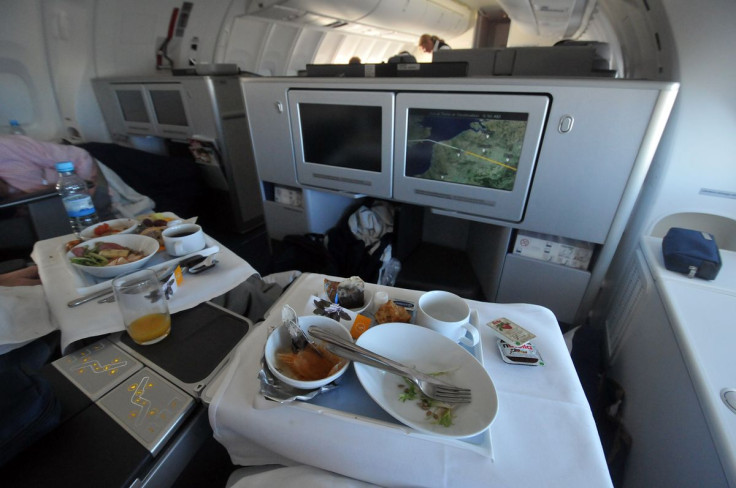
My seatmate, a very frequent-flying aviation trade journalist, pronounced the experience perfectly good yet not impressive. For me, compared to other business-class flights I've made across the Atlantic -- on airlines from both sides of the ocean including Alitalia, Delta Air Lines, and the late, lamented Swissair -- this Lufthansa flight stood out for a general feeling of smooth, quiet efficiency. Not unlike being driven in a top-end German sedan.
How much will flying like this cost you? A return ticket Miami to Frankfurt for July in business class ranged from $3,277 to a whopping $8,962 on lufthansa.com. Those who can't do without caviar for eight hours can shell out up to $12,255 for passage in first class, a rarefied world with eight enormous seats that we could only glimpse from the first-class-only galley, where a first-class-only stewardess was preparing a vodka and caviar appetizer. (Lufthansa says it's the world's biggest individual buyer of caviar, at 6.5 metric tons a year.)

In Frankfurt, I did get to sit in a first class seat on a 747-8 -- on the ground, during a visit to Lufthansa's LH Technik maintenance facilities. No surprises there: It's extremely comfortable, and any VIPs who don't want to deal with the other first class guests can raise their seat's privacy screen visible on the right.
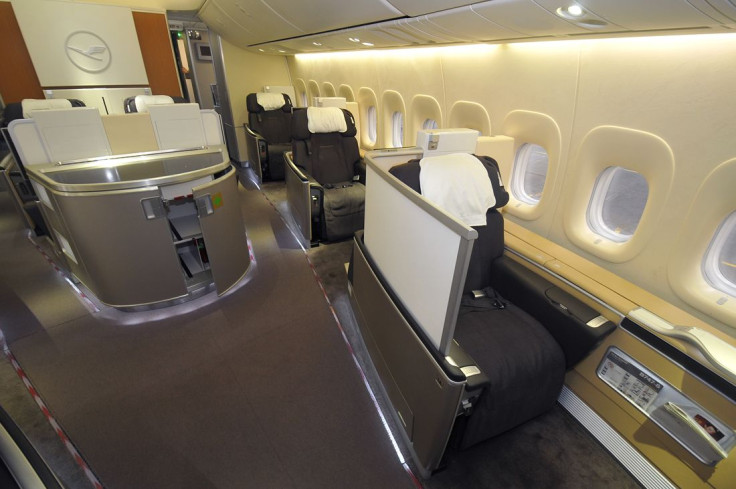
Crazy? Yes, although many first class passengers -- the airline doesn't say what percentage -- are frequent fliers who don't pay the fare, instead turning in their miles for upgrade. But, speaking of German cars, for that $12,255 price you don't board from the gate like a common mortal: They take you to the airplane in a Mercedes limousine.
© Copyright IBTimes 2024. All rights reserved.












